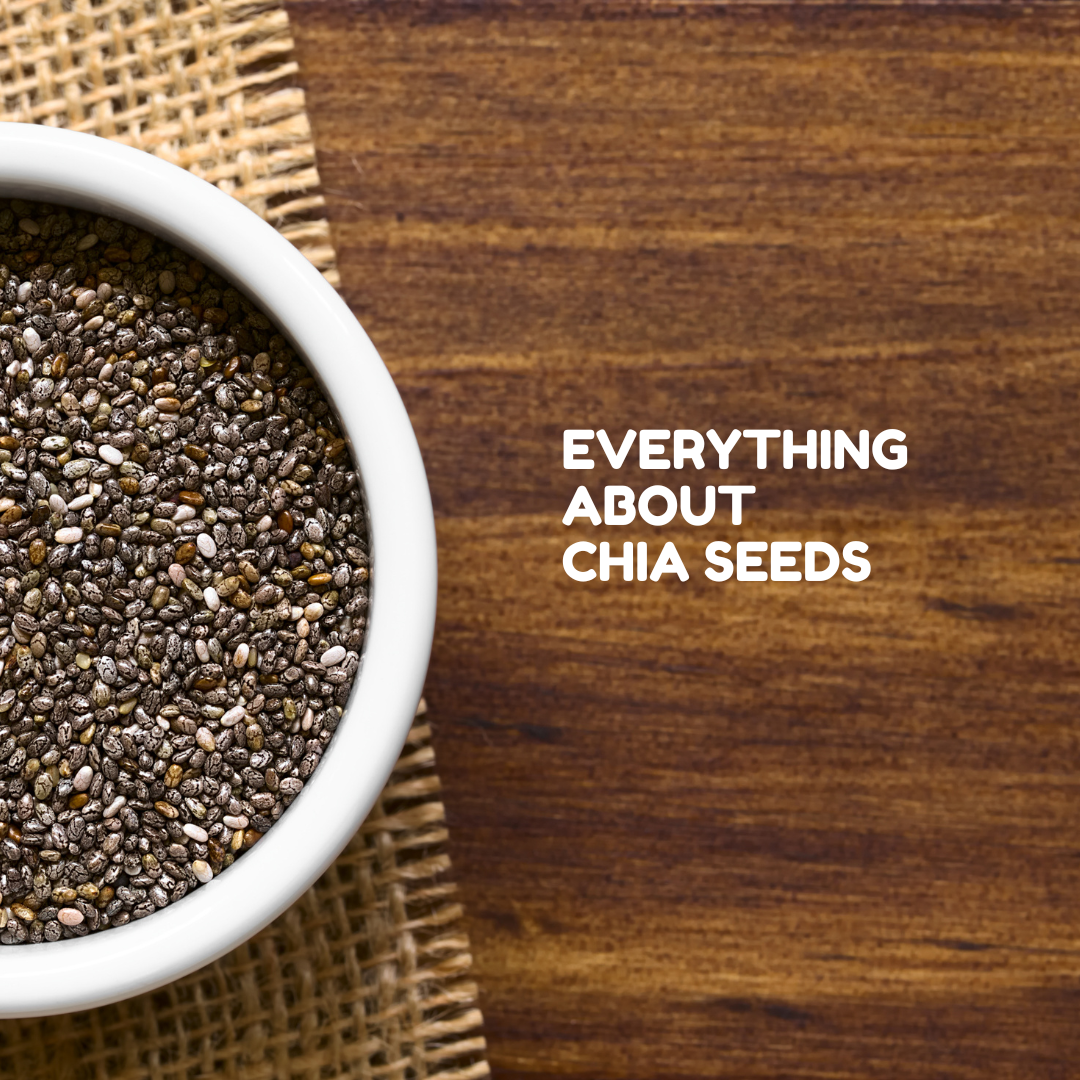Chia seeds (Salvia hispanica), also known as Salba Chia or Mexican Chia, are the edible seeds of a flowering plant belonging to the mint family.
Chia seeds are tiny in size. These seeds are fully packed with nutrients like Omega-3 fatty acids, iron, calcium, and antioxidants. Salvia Hispanica seeds are commonly recognized as a nutritional powerhouse with nuanced flavor and can be a valuable addition to balanced diets. An essential ingredient in Aztec and Mayan diets, they’ve been promoted as a health benefit for centuries.
The antioxidants, minerals, fiber, and omega-3 fats found in Chia seeds can help improve heart health, strengthen bones, and help improve blood sugar control. People add chia to a variety of recipes. You can sprinkle chia on top of other foods or incorporate them into smoothies, breakfast cereals, energy bars, granola bars, yogurt, tortillas, and bread. Soaking seeds of chia in water, milk, juice, or smoothies can form a gelatine-like substance or be eaten raw. The gel derived from ground seeds is used in cakes, offering additional nutrients, and in vegan and allergen-free baking.
What Are Chia Seeds / Salvia hispanica?
Salvia Hispania L., generally known as chia plant, is a type of annual herbaceous plant from the mint family that originates from Southern Mexico, Northern Guatemala, and certain parts of Central America. It is associated with the botanical family of Lamiaceae, Lamiales, Labiate, the subfamily of Nepetoideae, and the genus Salvia.
The plant originates from Mexico and Guatemala, with its seeds boasting a rich history. They served as a crucial crop in the ancient Aztec and Mesoamerican civilizations. It’s believed that Aztec warriors consumed chia seeds to enhance their endurance. Legends had it that ingesting just one teaspoon of chia could sustain them for 24 hours.
In the Mayan language, the word ‘chia” means strength.” Initially, chia plants were utilized for horse feed. Chia plants were believed to have medicinal properties and were essential to people’s diets. When people started recognizing its benefits for the human body, they introduced chia into their daily lives.
Seeds of chia plant are unprocessed whole grain food that is consumed as seeds. Almost 900 species of the genus Salvia have been extensively distributed across different regions of the world for thousands of years. Most of the chia plants are grown in regions of Southern Africa, Central America, North and South America, and Southeast Asia.
Chia seeds are considered one of the most powerful superfoods bestowed upon us by nature. It is rich in omega-3 – 3 fats, fiber, protein, antioxidants, and calcium. Chia is abundant in soluble fiber and work as an excellent natural laxative.
History Of Chia Seeds
The earliest evidence of chia dates back to approximately 3500 B.C. Subsequently, the Aztecs adopted its use, making it a staple in their diet. Chia remained prevalent for an extended period. Between 1500 and 900 B.C., it was cultivated in Mexico by the Teotihuacan and Toltec civilizations who found various unexpected uses of chia.
In addition to being consumed whole, the chia plant had various ancient uses. It has medicinal properties that can be used in medicine, ground into flour, incorporated as an ingredient in beverages, and pressed to extract oil. Chia seeds can be stored for extended periods, making them particularly useful, especially for traveling.
Beyond its practical applications, the significance of the chia seed was profound within Aztec culture. It was considered sacred and used as a sacrificial offering in religious ceremonies.
Where Do Chia Seeds Come From?
Chia seeds are grown commercially in several countries, including Mexico, Guatemala, Peru, Argentina, Australia, and the United States.
The plant is native to Mexico and Guatemala, and the seeds have a long-standing history. It was the third most important crop in the ancient Aztec and Mesoamerican civilizations. Aztec warriors ate Mexican Chia to boost their endurance. According to legends, the consumption of one teaspoon of chia would last them for 24 hours.
Chia Seeds Facts
- Chia, as part of the mint family, is protected from pests. Insects don’t like the mint, so it can be grown without applying pesticides.
- Chia plant and seeds gain such great popularity among the Aztecs that they employed them as a currency.
- Salba Chia is very temperamental and require particular conditions for growth. It can be grown at a 23-degree north-23 degrees south.
- Chia came to be found through Chia was discovered by Dr. Wayne Caotes in the 1990s as he was leading an effort in Argentina to look for cash crops that would benefit farmers in the region.
- Chia seed flowers are white and purple.
Moreover, seeds of chia plant are beneficial for your pet as well. Chia seeds are easy to store in a container. It doesn’t possess a distinct flavor or aroma. The general dosage of chia is ¼ teaspoon daily for every 10 pounds of your pet’s body weight.
Multiple researches have revealed a multitude of benefits from chia plants and seeds that were previously unknown – which is the kind of thing we’ll see when we get started.

